
The Timeless Vatican Obelisk: Echoes of Ancient Rome in Vatican City
Explore the Vatican Obelisk in Vatican City: An ancient Egyptian monument that stands as a centerpiece of history, spirituality, and architectural brilliance.
The Vatican Obelisk is an iconic landmark in the heart of Vatican City. This towering ancient monument stands proudly in St. Peter's Square, surrounded by the grandeur of the Vatican's architectural marvels. Originally brought to Rome from Egypt by Emperor Caligula in AD 37, the obelisk has witnessed centuries of history, from the Roman Empire to the rise of Catholicism. As you stand before the Vatican Obelisk, imagine the countless stories it has silently observed. The obelisk's red granite surface, rising nearly 25 meters high, is a testament to the craftsmanship of ancient civilizations. It was moved to its current location in 1586 by Pope Sixtus V, an engineering feat led by the renowned architect Domenico Fontana. Today, it serves as a central point in St. Peter's Square, where pilgrims and tourists alike gather in awe. Visiting the Vatican Obelisk is more than just seeing a historical artifact; it's a journey through time. The obelisk is surrounded by the beauty of St. Peter's Basilica and the Vatican Museums, offering visitors a unique blend of ancient history and religious significance. Whether you're a history buff, an art lover, or a spiritual seeker, the Vatican Obelisk provides a profound sense of connection to the past.
Local tips in Vatican Obelisk
- Visit early in the morning or late afternoon to avoid the crowds and enjoy a more peaceful experience.
- Take a guided tour to learn more about the fascinating history and significance of the obelisk.
- Wear comfortable shoes, as St. Peter's Square is vast and you'll likely do a lot of walking.
- Bring a camera to capture the stunning views of the obelisk with St. Peter's Basilica in the background.
- Check the Vatican's schedule for special events or ceremonies that might enhance your visit.
The Timeless Vatican Obelisk: Echoes of Ancient Rome in Vatican City
The Vatican Obelisk is an iconic landmark in the heart of Vatican City. This towering ancient monument stands proudly in St. Peter's Square, surrounded by the grandeur of the Vatican's architectural marvels. Originally brought to Rome from Egypt by Emperor Caligula in AD 37, the obelisk has witnessed centuries of history, from the Roman Empire to the rise of Catholicism. As you stand before the Vatican Obelisk, imagine the countless stories it has silently observed. The obelisk's red granite surface, rising nearly 25 meters high, is a testament to the craftsmanship of ancient civilizations. It was moved to its current location in 1586 by Pope Sixtus V, an engineering feat led by the renowned architect Domenico Fontana. Today, it serves as a central point in St. Peter's Square, where pilgrims and tourists alike gather in awe. Visiting the Vatican Obelisk is more than just seeing a historical artifact; it's a journey through time. The obelisk is surrounded by the beauty of St. Peter's Basilica and the Vatican Museums, offering visitors a unique blend of ancient history and religious significance. Whether you're a history buff, an art lover, or a spiritual seeker, the Vatican Obelisk provides a profound sense of connection to the past.
When is the best time to go to Vatican Obelisk?
Iconic landmarks you can’t miss
Saint Peter's Square
Discover the architectural marvels and spiritual heart of Vatican City at Saint Peter's Square, a must-visit destination for every traveler.
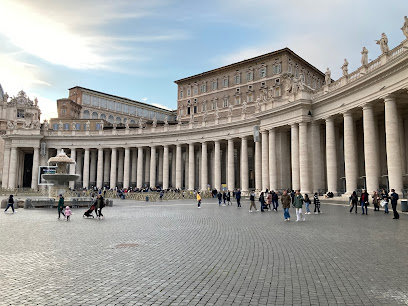
St. Peter Square Obelisk
Experience the grandeur of St. Peter's Square Obelisk, a historic landmark in Vatican City, surrounded by stunning architecture and rich cultural heritage.
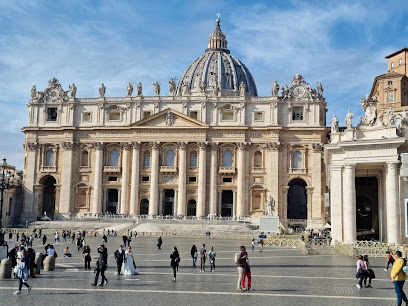
Vatican Necropolis
Explore the Vatican Necropolis, a hidden archaeological marvel beneath St. Peter's Basilica, revealing the ancient roots of Christianity.
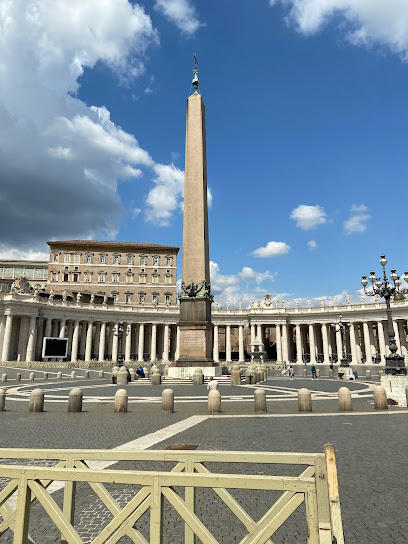
Bernini Fountain
Experience the breathtaking artistry of Bernini Fountain in Vatican City, a masterpiece of Baroque design and a must-visit tourist attraction.
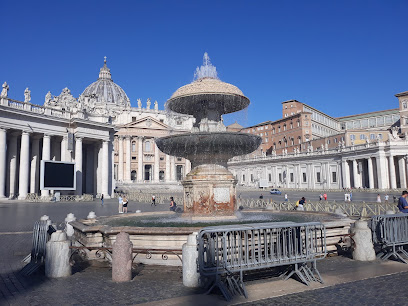
Scala Elicoidale Momo
Explore the stunning Scala Elicoidale Momo, a spiraling architectural marvel in Vatican City, showcasing exquisite design and captivating historical significance.
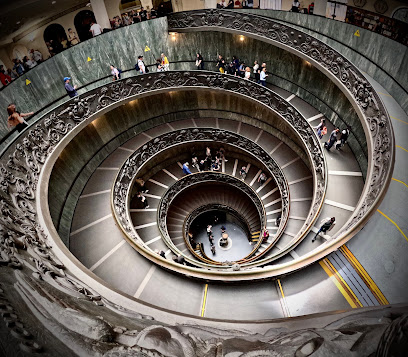
Unmissable attractions to see
Piazza Vittorio Emanuele II
Explore the vibrant Piazza Vittorio Emanuele II in Rome, a city park filled with history, culture, and lively local atmosphere.
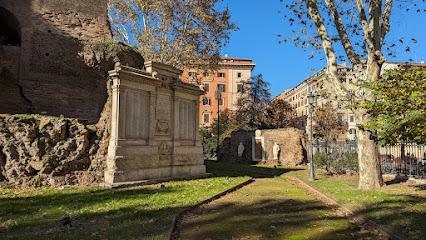
IKONO Roma
Experience the fusion of art and technology at IKONO Roma, a captivating museum that transforms the way you see and feel art in the heart of Rome.

Porta Maggiore
Discover the captivating history of Porta Maggiore, a stunning historical gate in Rome that showcases the city's ancient architecture and vibrant past.
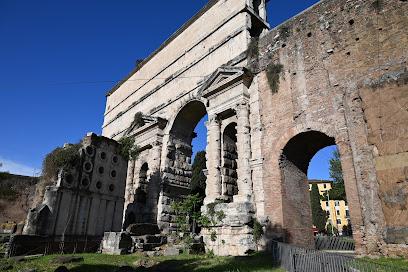
Villa Sciarra
Explore Villa Sciarra, a tranquil park in Rome featuring lush gardens, historic architecture, and stunning views, perfect for relaxation and exploration.
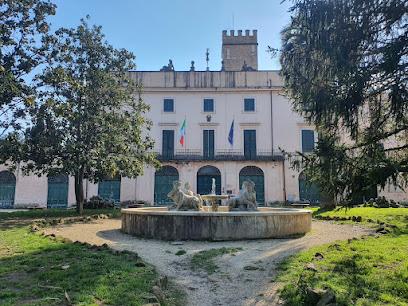
Museo Nazionale Romano, Palazzo Altemps
Discover the ancient wonders at Museo Nazionale Romano, Palazzo Altemps, a premier archaeological museum in the heart of Rome showcasing timeless artifacts and art.
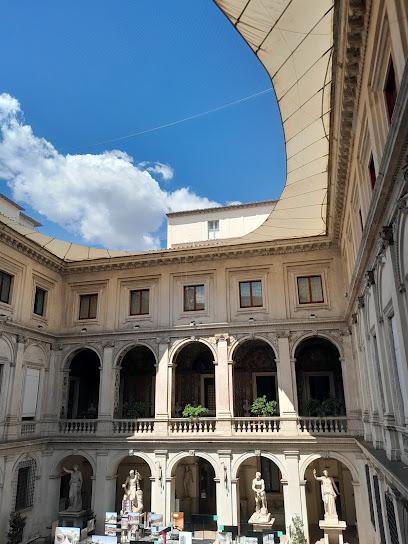
Giulio Cesare - Circuito Cinema
Discover the charm of Giulio Cesare - Circuito Cinema in Rome, where diverse films and a delightful atmosphere await every movie enthusiast.

Basilica dei Santi Pietro e Paolo
Explore the grandeur of Basilica dei Santi Pietro e Paolo, a spiritual and artistic gem in the heart of Rome, showcasing stunning architecture and rich history.
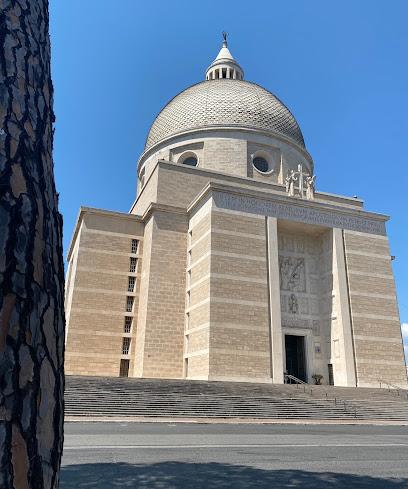
Catacombs of Priscilla
Discover the ancient Catacombs of Priscilla in Rome, an archaeological wonder filled with stunning frescoes and rich Christian history.
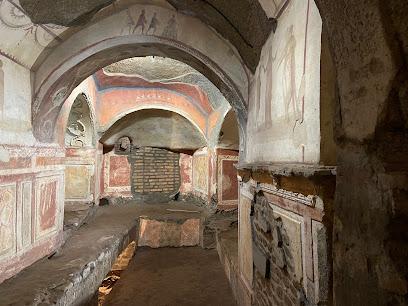
Mausoleo Delle Fosse Ardeatine
Discover the poignant history of the Mausoleo Delle Fosse Ardeatine, a memorial in Rome honoring the victims of World War II with serene beauty and profound significance.
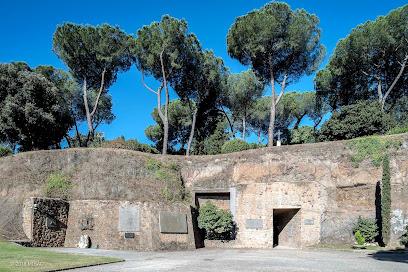
Giardini di Piazza Mazzini
Discover the tranquility of Giardini di Piazza Mazzini, a hidden gem in Rome offering lush gardens and a stunning fountain for a serene escape.
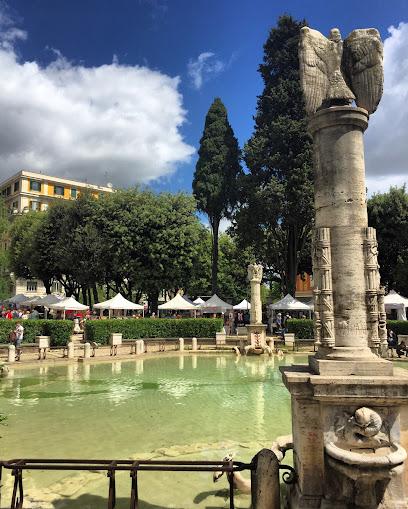
TopBike Rental & Tours
Explore the Eternal City on two wheels with TopBike Rental & Tours, offering bike rentals and guided tours to uncover Rome's treasures.
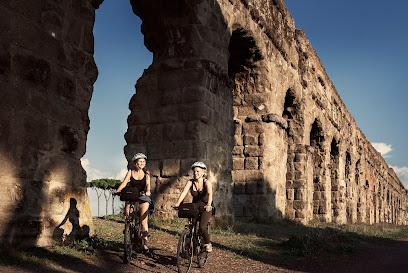
Faro di Roma
Explore the Faro di Roma for breathtaking views and rich history atop Gianicolo Hill, a serene escape in the heart of the Eternal City.
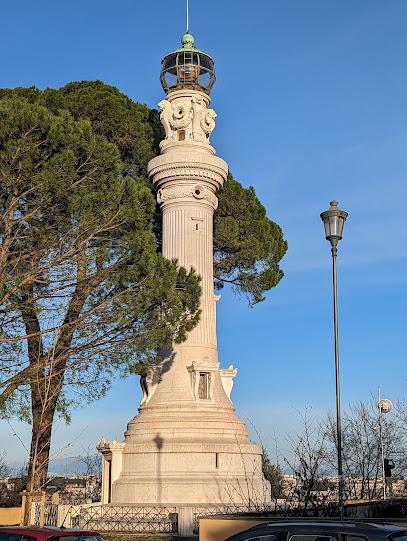
Museo Carlo Bilotti
Explore the Museo Carlo Bilotti in Rome, where contemporary art meets historical elegance in a stunning museum setting.
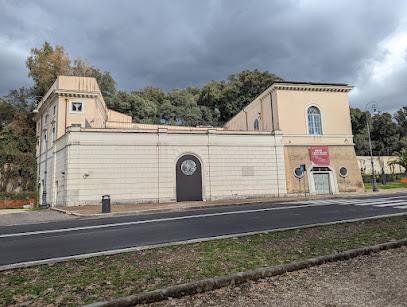
San Giorgio in Velabro
Experience the serenity and historical significance of San Giorgio in Velabro, a hidden gem in the heart of Rome, perfect for cultural and spiritual exploration.
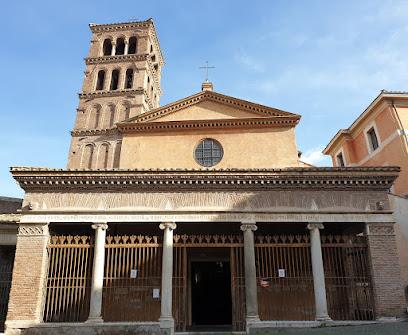
Cinecittà Si Mostra
Explore the captivating world of Italian cinema at Cinecittà Si Mostra, a museum that showcases iconic films and the magic of filmmaking in Rome.
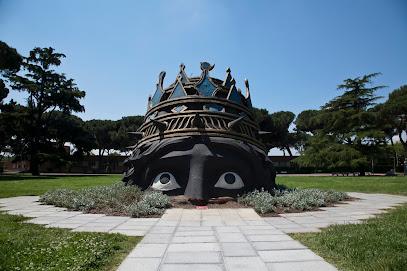
Essential places to dine
Pastasciutta
Discover affordable Italian cuisine at Pastasciutta in Rome—where delicious pasta meets warm hospitality near Vatican City.
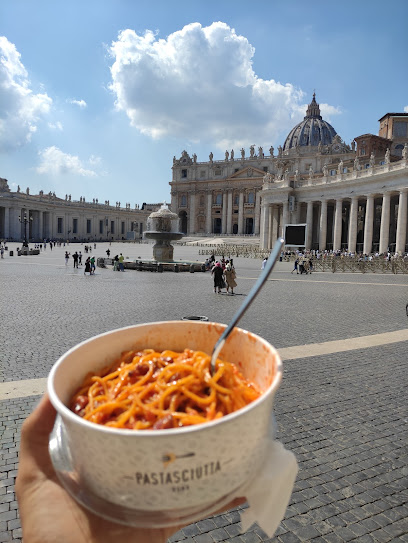
Ristorante dei Musei
Experience authentic Italian cuisine at Ristorante dei Musei, where delectable pizzas meet charming ambiance near Vatican City.
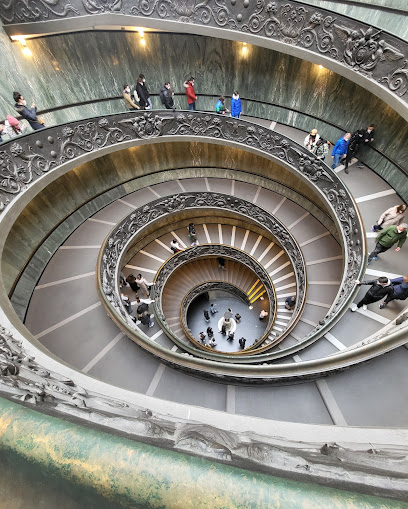
La Soffitta Renovatio
Experience authentic Italian cuisine at La Soffitta Renovatio near the Vatican—home to delicious pizzas and traditional dishes in a warm atmosphere.
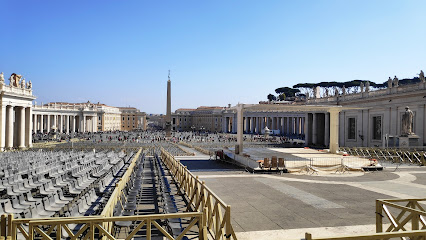
Pizza Zizza
Experience authentic Italian flavors at Pizza Zizza in Rome – where every slice tells a story.
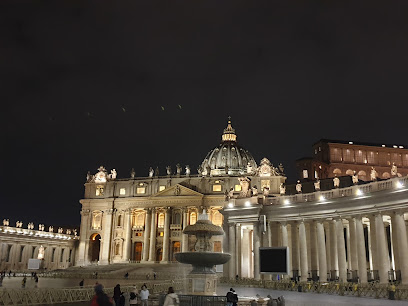
Papa Rex Ristorante - dal 1991 -
Savor authentic Italian flavors at Papa Rex Ristorante - where tradition meets taste in the heart of Rome.

Ristorante Arlù
Experience the authentic taste of Italy at Ristorante Arlù near Vatican City – where every dish tells a story.

Forno Feliziani
Experience authentic Roman pizza at Forno Feliziani near Vatican City—where tradition meets flavor in every slice.
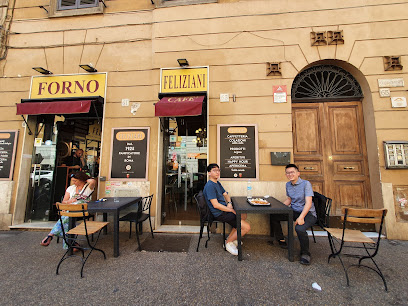
La Locanda di Pietro
Indulge in authentic Italian flavors at La Locanda di Pietro - your ultimate dining destination in Rome!
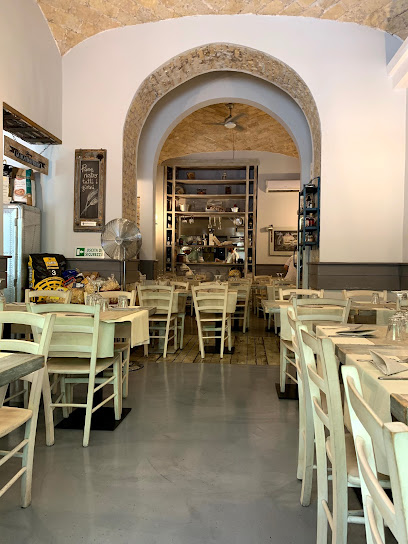
Trattoria Vaticano Giggi
Experience authentic Roman cuisine at Trattoria Vaticano Giggi near the Vatican—where tradition meets flavor in every dish.
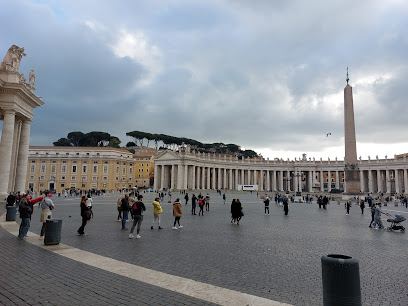
Goose
Savor authentic Roman cuisine and artisanal pizzas at Goose, a beloved restaurant in the heart of Rome.

Osteria delle Commari
Discover Osteria delle Commari: A delightful Italian restaurant near the Vatican offering gluten-free options and authentic Mediterranean cuisine.
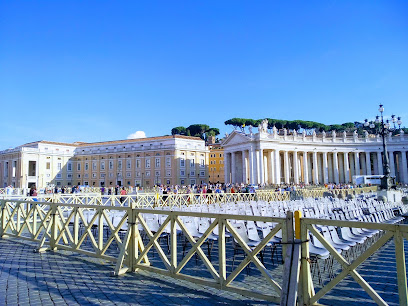
The Loft
Experience authentic Italian cuisine at The Loft Bistro near Vatican City – where every meal is a celebration of flavor and tradition.
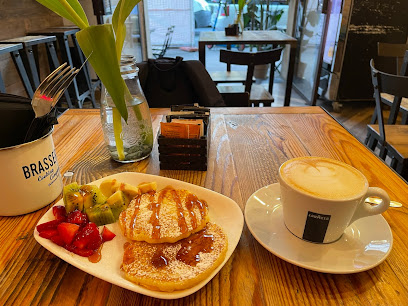
Hostaria San Pietro
Experience authentic Italian cuisine at Hostaria San Pietro near Vatican City; indulge in delicious pizzas and handcrafted cocktails.
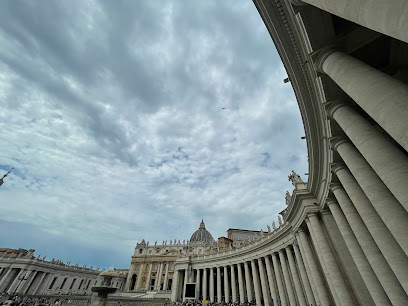
Piacere Molise
Savor authentic Italian cuisine at Piacere Molise in Rome – where every bite transports you to Italy's culinary heart.
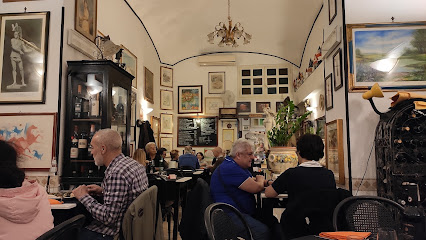
Il Segreto - Italian restaurant near the Vatican
Experience authentic Italian flavors at Il Segreto, an enchanting restaurant located steps away from Vatican City.
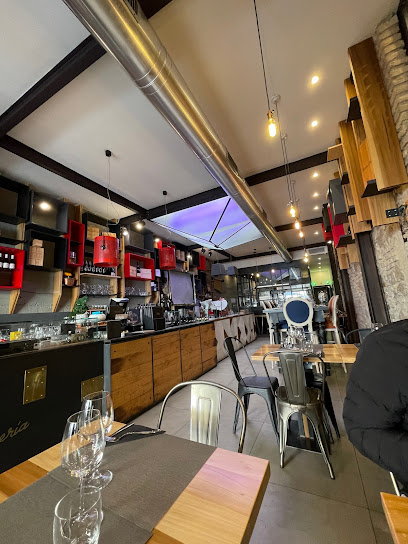
Markets, malls and hidden boutiques
The Rock Shop
Experience the fusion of fashion and music at The Rock Shop in Rome, where every item tells a story and celebrates legendary artists.
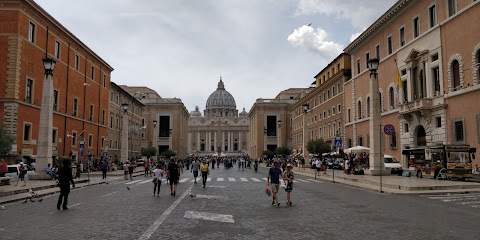
Annona Vatican City
Discover authentic Italian flavors at Annona Vatican City, a grocery store offering local produce and artisanal products in the heart of Vatican City.
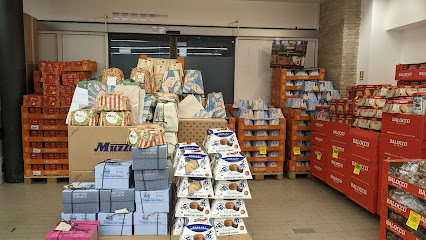
Savelli Religious (Savelli Art and Tradition)
Discover unique spiritual gifts and exquisite jewelry at Savelli Religious, a hidden gem in the heart of Rome, Italy.

St. Peter's Gallery
Explore St. Peter's Gallery for unique souvenirs and relaxing coffee moments near Vatican City, a perfect stop for every traveler.
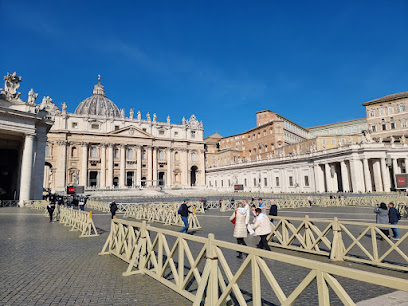
Mondo Cattolico
Discover Mondo Cattolico, a unique store in Vatican City offering religious artifacts and souvenirs that embody the spirit of faith and devotion.
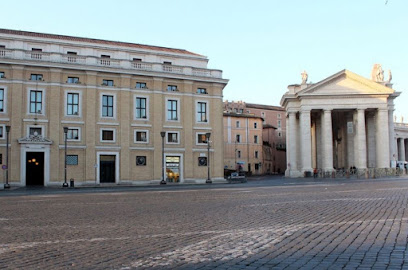
Vatican Emporium - Religious Articles & Gifts
Discover authentic religious artifacts and gifts at the Vatican Emporium, a spiritual haven near the Vatican in the heart of Rome.
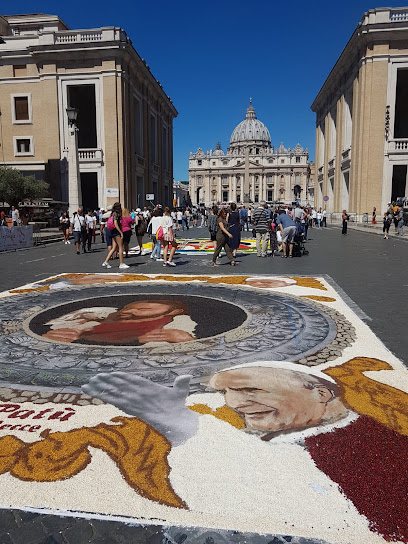
Domus Artis
Explore Domus Artis in Rome: A unique art gallery filled with religious artifacts, jewelry, and authentic Italian souvenirs for every traveler.
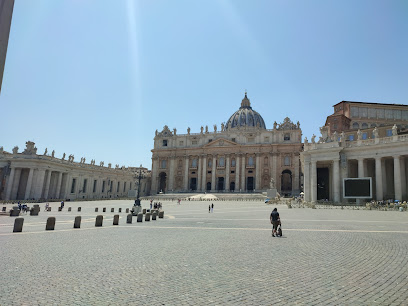
Tourist Information Office
Discover the treasures of Vatican City at the Tourist Information Office - your gateway to unforgettable experiences and unique souvenirs.
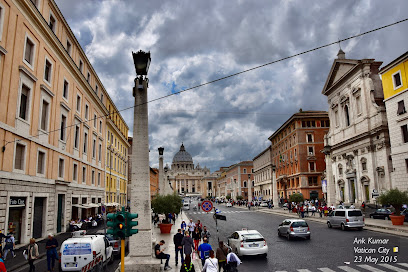
Galleria Mariana
Discover the rich spiritual heritage of Rome at Galleria Mariana, a premier destination for religious goods and unique souvenirs.

Souvenirs San Pietro Sas di Ferru Zenobio E C.
Discover unique religious souvenirs in Rome at Souvenirs San Pietro, where every artifact embodies the city's sacred spirit.
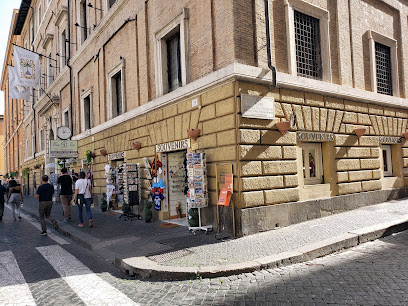
Emporio Vaticano
Discover Emporio Vaticano, a religious goods store in Rome offering beautiful artifacts and souvenirs that embody the city's spiritual essence.
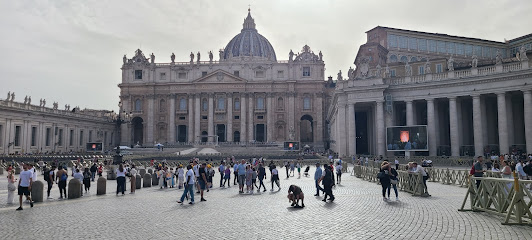
HUMILIS Made in Assisi (Boutique Roma Vaticano)
Explore exquisite handcrafted jewelry at HUMILIS Made in Assisi, a charming boutique in the heart of Rome that captures the essence of Italian artistry.
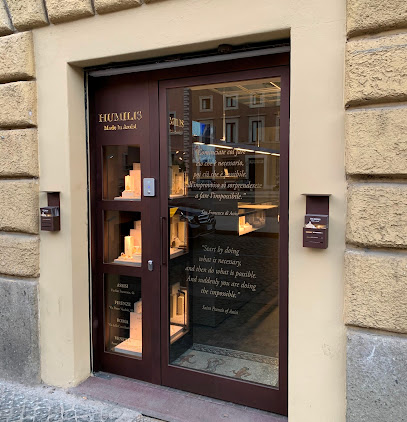
Ave Roma
Discover spiritual treasures at Ave Roma, a premier religious goods store near the Vatican, offering unique artifacts and meaningful souvenirs.
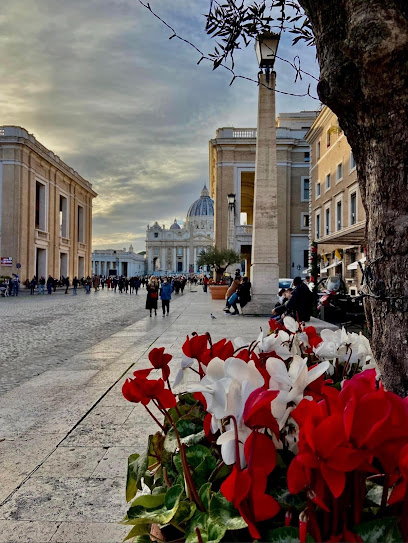
Articoli Religiosi Souvenir da Tamara
Discover a piece of Italy's spiritual heritage at Articoli Religiosi Souvenir da Tamara, your destination for unique religious artifacts in Rome.
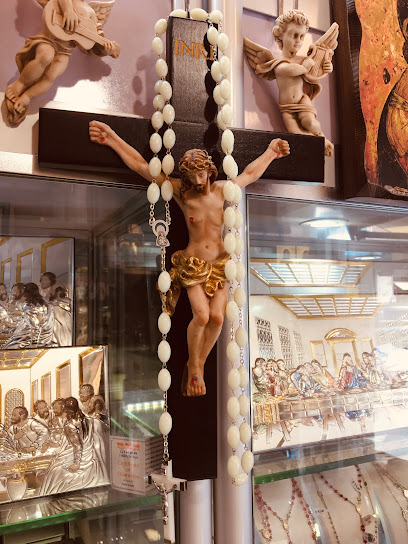
Souvenir e articoli religiosi di Lina
Explore the rich spiritual heritage of Rome at Souvenir e articoli religiosi di Lina, your destination for religious artifacts and unique souvenirs.

Essential bars & hidden hideouts
Be.Re. + Trapizzino
Discover Be.Re. + Trapizzino in Rome, where traditional flavors meet modern gastropub creativity in a vibrant setting.
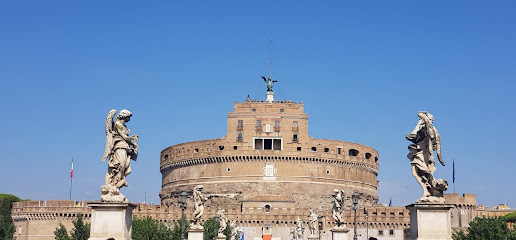
Wine Bar De' Penitenzieri
Discover the authentic flavors of Italy at Wine Bar De' Penitenzieri, where exquisite wines and delectable cuisine meet in the heart of Rome.
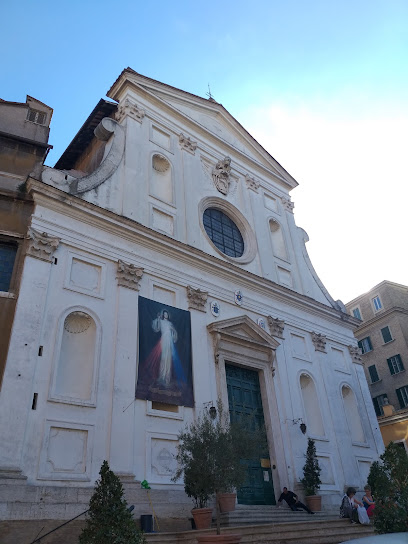
Caffè Vaticano
Experience authentic Italian coffee culture at Caffè Vaticano, a cozy espresso bar near the Vatican, perfect for tourists seeking a delightful break.
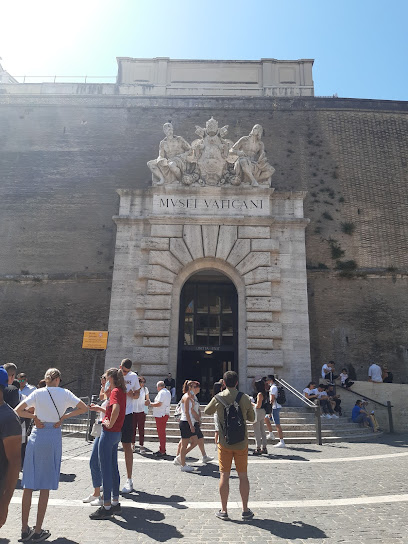
Cafe San Pietro
Experience authentic Italian café culture at Cafe San Pietro, where rich coffees and delectable pastries await in the heart of Rome.
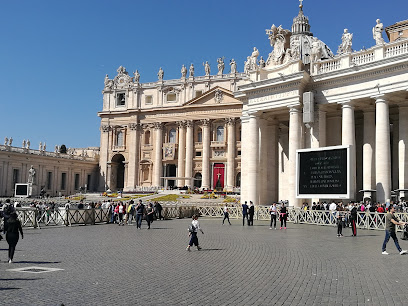
Bukowski's Bar
Experience the vibrant atmosphere of Bukowski's Bar in the heart of Rome, where modern bistro fare meets a rich selection of drinks.
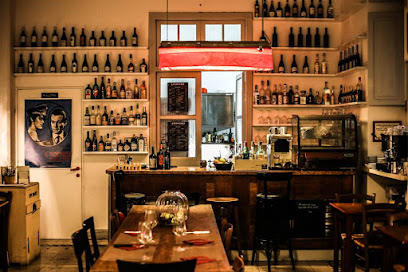
Saxophone Live Pub
Experience the vibrant nightlife of Rome at Saxophone Live Pub, a hub for live music and unforgettable moments in a cozy setting.
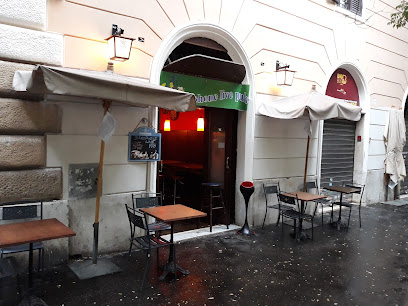
Birreria Martini Esperienza Tedesca
Discover authentic German cuisine and a lively beer hall atmosphere at Birreria Martini in the heart of Rome.

Wine Bar All Brothers
Experience the rich flavors of Italy at Wine Bar All Brothers, featuring exquisite wines, delicious pizzas, and delightful ice creams in the heart of Rome.
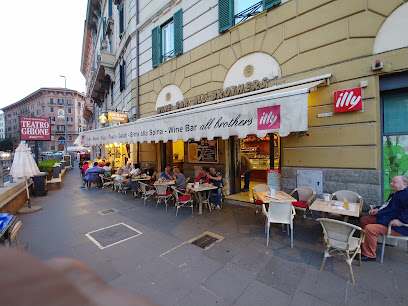
Ginny | Cocktail Bar | Wine Bar | Ristorante
Experience the vibrant atmosphere and exquisite cocktails at Ginny, a stylish cocktail bar and restaurant in the heart of Rome, Italy.
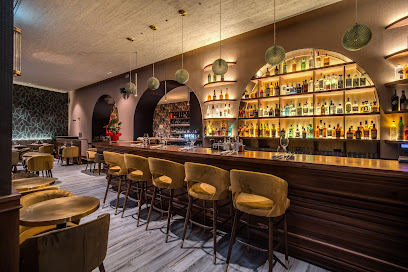
Bar Latteria Giuliani
Experience authentic Italian coffee and pastries at Bar Latteria Giuliani, a cozy bar in the heart of Rome's charming Borgo Pio.
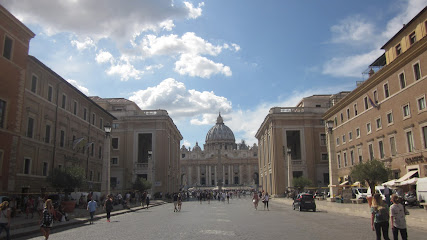
Derry Rock Pub
Immerse yourself in the lively atmosphere of Derry Rock Pub, where Irish charm meets Roman nightlife with live music and cocktails galore.
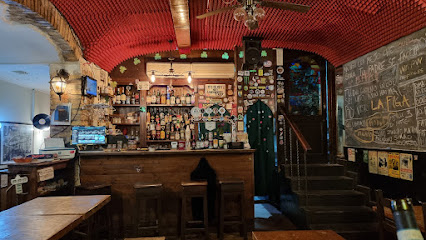
Caffè Leonina
Discover the charm of Caffè Leonina, a cozy bar in Rome's historic piazza, perfect for authentic coffee and local pastries.
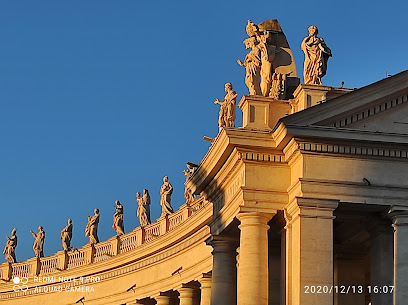
Roof Garden & Bar
Experience the breathtaking beauty of Rome from the Roof Garden & Bar, where exquisite drinks meet stunning panoramic views.
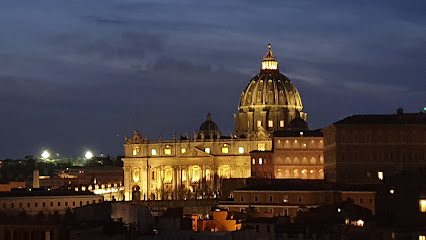
Bar Delle Grazie
Experience the heart of Roman culture at Bar Delle Grazie, where delightful flavors and local charm come together in a cozy setting.
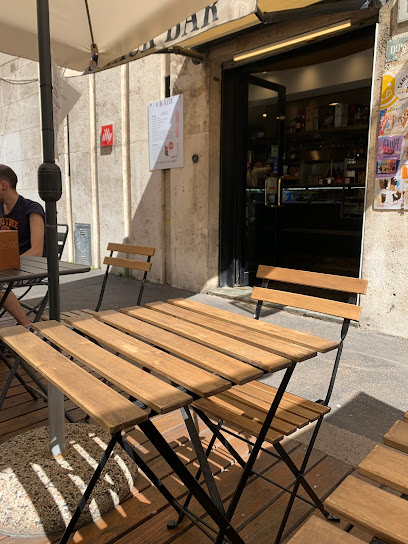
Al Mio Caffè
Experience the rich flavors and warm atmosphere of Al Mio Caffè, a true gem in the heart of Rome's vibrant coffee culture.
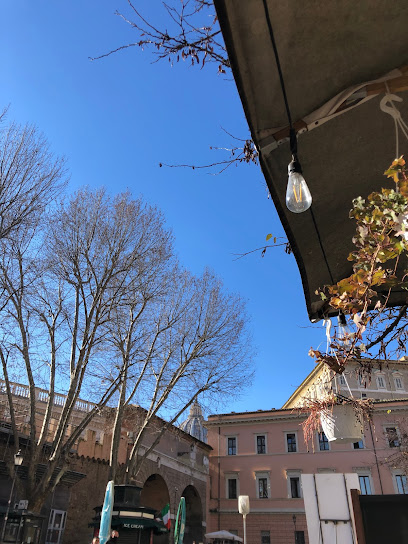
Local Phrases about Vatican Obelisk
-
- HelloCiao
[chah-oh] - GoodbyeArrivederci
[ah-ree-veh-dehr-chee] - YesSì
[see] - NoNo
[noh] - Please/You're welcomePer favore/Prego
[pehr fah-voh-reh/preh-goh] - Thank youGrazie
[grah-tsyeh] - Excuse me/SorryMi scusi/Scusa
[mee skoo-zee/skoo-zah] - How are you?Come stai?
[koh-meh stah-ee] - Fine. And you?Bene. E tu?
[beh-neh. eh too] - Do you speak English?Parli inglese?
[pahr-lee een-gleh-zeh] - I don't understandNon capisco
[nohn kah-pee-skoh]
- HelloCiao
-
- I'd like to see the menu, pleaseVorrei vedere il menu, per favore
[vohr-reh-ee veh-deh-reh eel meh-noo, pehr fah-voh-reh] - I don't eat meatNon mangio carne
[nohn mahn-joh kahr-neh] - Cheers!Salute!
[sah-loo-teh] - I would like to pay, pleaseVorrei pagare, per favore
[vohr-reh-ee pah-gah-reh, pehr fah-voh-reh]
- I'd like to see the menu, pleaseVorrei vedere il menu, per favore
-
- Help!Aiuto!
[ah-yoo-toh] - Go away!Vai via!
[vah-ee vee-ah] - Call the Police!Chiamate la polizia!
[kyah-mah-teh lah poh-lee-tsyah] - Call a doctor!Chiamate un dottore!
[kyah-mah-teh oon doh-toh-reh] - I'm lostMi sono perso
[mee soh-noh pehr-soh] - I'm illMi sento male
[mee sehn-toh mah-leh]
- Help!Aiuto!
-
- I'd like to buy...Vorrei comprare...
[vohr-reh-ee kohm-prah-reh] - I'm just lookingSto solo guardando
[stoh soh-loh gwahr-dahn-doh] - How much is it?Quanto costa?
[kwahn-toh koh-stah] - That's too expensiveÈ troppo caro
[eh troh-poh kah-roh] - Can you lower the price?Può abbassare il prezzo?
[pwoh ahb-bahs-sah-reh eel preh-tsoh]
- I'd like to buy...Vorrei comprare...
-
- What time is it?Che ora è?
[keh oh-rah eh] - It's one o'clockÈ l'una
[eh loo-nah] - Half past (10)E mezza (10)
[eh meh-tsah (dee-chee)] - MorningMattina
[maht-tee-nah] - AfternoonPomeriggio
[poh-meh-ree-joh] - EveningSera
[seh-rah] - YesterdayIeri
[ee-eh-ree] - TodayOggi
[oh-jee] - TomorrowDomani
[doh-mah-nee] - 1Uno
[oo-noh] - 2Due
[doo-eh] - 3Tre
[treh] - 4Quattro
[kwah-troh] - 5Cinque
[cheen-kweh] - 6Sei
[seh-ee] - 7Sette
[seht-teh] - 8Otto
[oht-toh] - 9Nove
[noh-veh] - 10Dieci
[dee-eh-chee]
- What time is it?Che ora è?
-
- Where's a/the...?Dov'è un/il...?
[doh-veh oon/eel] - What's the address?Qual è l'indirizzo?
[kwahl eh leen-dee-ree-tsoh] - Can you show me (on the map)?Può mostrarmi (sulla mappa)?
[pwoh mohs-trahr-mee (sool-lah mahp-pah)] - When's the next (bus)?Quando è il prossimo (autobus)?
[kwahn-doh eh eel prohs-see-moh (ow-toh-boos)] - A ticket (to ....)Un biglietto (per ....)
[oon beel-lyeh-toh (pehr)]
- Where's a/the...?Dov'è un/il...?
History of Vatican Obelisk
-
The Vatican Obelisk, originally from Heliopolis, Egypt, was erected by an unknown pharaoh around 2500 BC. It was later transported to Alexandria by order of Emperor Augustus in 30 BC.
-
The obelisk was moved to Rome by Emperor Caligula in 37 AD. It was placed at the center of the Circus of Nero, a chariot racing stadium, symbolizing Rome's power and connection to ancient civilizations.
-
The Vatican Obelisk witnessed the martyrdom of St. Peter, who was crucified in the Circus of Nero. This event marked the beginning of the obelisk's association with Christianity.
-
In 1586, Pope Sixtus V ordered the relocation of the obelisk to its current position in St. Peter's Square. The move was a monumental engineering feat, involving 900 men, 140 horses, and a network of ropes and pulleys.
-
Upon its relocation, the obelisk was adorned with inscriptions by Pope Sixtus V. A bronze cross containing a relic of the True Cross was placed at the top, symbolizing the triumph of Christianity.
-
The obelisk's placement in St. Peter's Square, designed by Gian Lorenzo Bernini, enhances the square's grandeur and serves as a focal point for the basilica, embodying the fusion of ancient and Christian art and architecture.
-
Today, the Vatican Obelisk stands as a testament to Rome's imperial past and its enduring significance in the Christian world. It attracts millions of pilgrims and tourists, symbolizing the continuity of history and faith.
Vatican Obelisk Essentials
-
Vatican City is nestled within the city of Rome, Italy. The nearest airport is Leonardo da Vinci International Airport (Fiumicino), situated approximately 30 kilometers away. From the airport, you can take a train to Roma Termini station and then use the metro (Line A) to reach Ottaviano-San Pietro station. Alternatively, taxis and direct shuttle buses are available from the airport to central Rome.
-
Once in Rome, Vatican City is easily accessible by public transport. The metro's Line A (orange) stops at Ottaviano-San Pietro station, just a short walk from the Vatican. Several bus lines, including routes 40 and 64, also serve the area. For a more scenic route, consider walking or biking from central Rome. Taxis and ride-sharing services are also available but can be more expensive due to high tourist demand.
-
The official currency in Vatican City is the Euro (EUR). Credit and debit cards are widely accepted, especially in tourist areas, but it's advisable to carry some cash for smaller purchases and tips. ATMs are available near the Vatican, and currency exchange services can be found in nearby Rome.
-
Vatican City is generally a safe destination with a strong security presence. However, be cautious of pickpockets, especially in crowded areas like St. Peter's Square and the Vatican Museums. Avoid isolated areas at night and keep personal belongings secure. Rome's Termini station and the surrounding area can be hotspots for petty crime, so exercise extra vigilance there.
-
In case of emergency, dial 112 for immediate assistance. There are medical facilities and pharmacies in the vicinity of Vatican City. It is advisable to have travel insurance that covers medical emergencies. For minor issues, pharmacies in Rome can provide over-the-counter medications. The Vatican Gendarmerie (police) are also on hand to assist with security concerns.
-
Fashion: Do dress modestly, especially when entering St. Peter's Basilica or the Vatican Museums. Shoulders and knees should be covered. Religion: Do show respect by maintaining silence in places of worship and refraining from disruptive behavior. Public Transport: Do validate your ticket before boarding buses or trains to avoid fines. Don’t eat, drink, or speak loudly on public transport. Greetings: Do greet people with a simple 'Buongiorno' (good morning) or 'Buonasera' (good evening). Eating & Drinking: Do try local Italian cuisine, but don’t rush meals; savor the experience and the flavors.
-
To experience the Vatican like a local, consider visiting early in the morning or late in the afternoon to avoid the peak tourist rush. Attend a Papal Audience on Wednesdays if you want to see the Pope; tickets are free but must be reserved in advance. For a quieter experience, explore the Vatican Gardens, which require a guided tour reservation. Additionally, take a stroll through the nearby Borgo Pio neighborhood for charming cafes and local shops.
Nearby Cities to Vatican Obelisk
-
Things To Do in Apostolic Palace
-
Things To Do in Sistine Chapel
-
Things To Do in St. Peter's Basilica
-
Things To Do in Vatican Necropolis
-
Things To Do in Gregorian Etruscan Museum
-
Things To Do in Vatican Museums
-
Things To Do in Vatican Pinacoteca
-
Things To Do in Vatican Gardens
-
Things To Do in Rome
-
Things To Do in Orvieto
-
Things To Do in Assisi
-
Things To Do in Perugia
-
Things To Do in Montepulciano
-
Things To Do in Arezzo
-
Things To Do in Siena









